Monument cleaning and restoration
Cleaning and restoring monuments is a task that presents a unique set of challenges. One of the key considerations is the risk of damaging these precious and historic objects with incorrect procedures. In order to determine the appropriate cleaning techniques, a thorough analysis of the materials, type and level of dirt, as well as the shapes and structures involved is necessary. This often involves testing possible cleaning methods on sample surfaces to ensure their effectiveness and safety. Some of the available options for restoration cleaning include low-pressure particle blasting, hot-water high-pressure cleaning with a steam stage, dry ice blasting, compresses, or even laser technology.
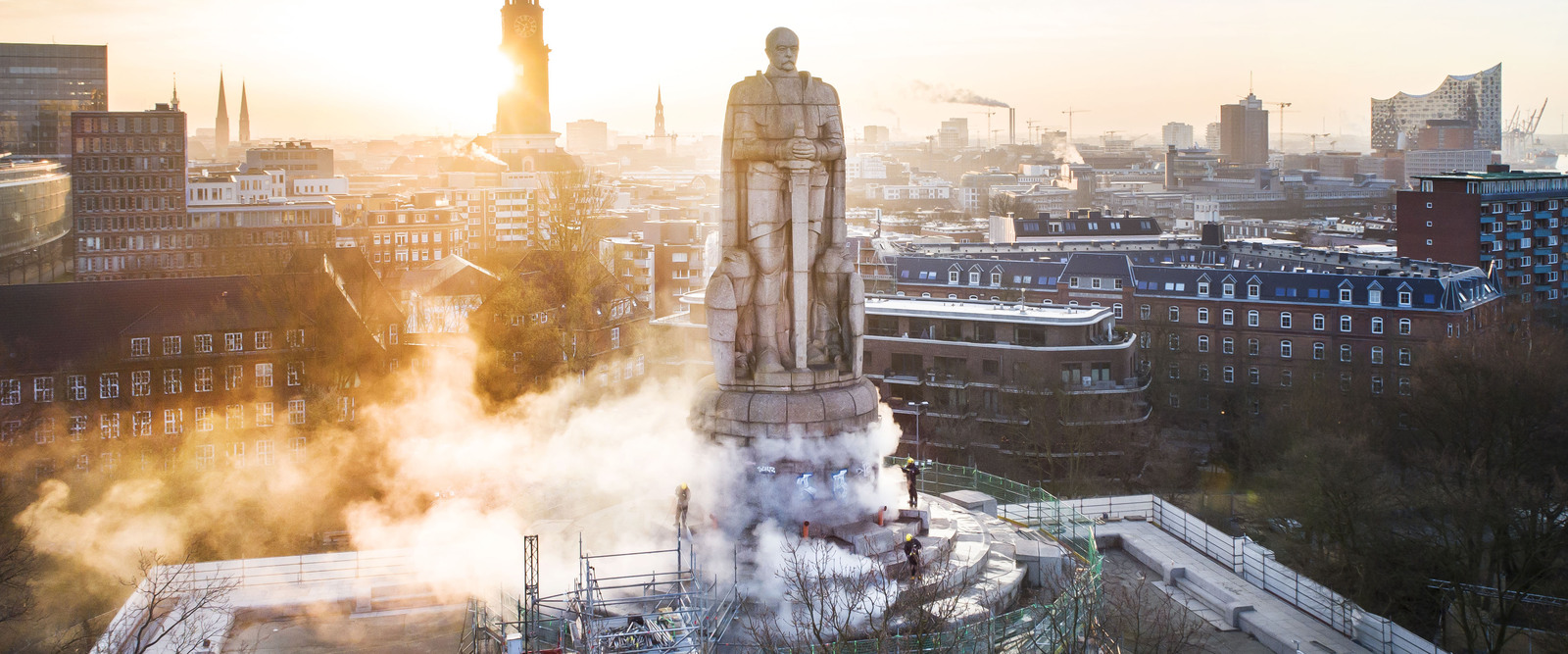
Essential preliminary work in restoration cleaning
Cleaning monuments requires close collaboration among various parties, including the monument's owner, local authorities, and potentially, restorers, art historians, and other specialists. Due to the importance and unique characteristics of each monument, cleaning is often an essential part of its restoration process.
Analyse the condition
Facade cleaning includes cleaning the entire outer shell of a building, and perhaps also outdoor facilities such as fountains, statues, sculptures. During a thorough preliminary examination and analysis, the age, type and condition of the facade material or other surfaces are determined, as well as the type and degree of weathering or dirt. A distinction is made between mineral pollution and organic pollution. Mineral pollution includes efflorescence, sintering or corrosion, i.e. verdigris or brownstone on metal facades, and organic pollution includes soot, bird droppings, or biogenic growth such as algae, mosses, lichens and fungi.
Establish cleaning goals
Cleaning experts should be involved in the preliminary assessments. During on-site inspections, the team can discuss monument cleaning and maintenance goals. There are different approaches to this. Sometimes restoration means the reconstruction of an original condition, in other cases weathering and ageing is seen as an essential part of a building's history and shouldn’t be ‘corrected’. This changes between nations, too.
Preserving evidence of the original stonework can present a significant challenge, especially if the substrate is unstable or if dirt particles have penetrated the building materials and formed mixed materials that are difficult to distinguish from the original substance. In such cases, a thorough and comprehensive initial assessment and investigation is essential to determine the appropriate cleaning approach. With careful analysis and testing of cleaning techniques, it may be possible to remove the stubborn dirt and reveal the original stonework while preserving its integrity.
Identify sample surfaces
Once the initial assessments have been completed and the monument cleaning goals set, sample surfaces should be identified to test possible cleaning techniques. This makes it possible to see whether the cleaning goal can be achieved by restoration cleaning and whether the original surface can be restored without compromising the original material or substance.
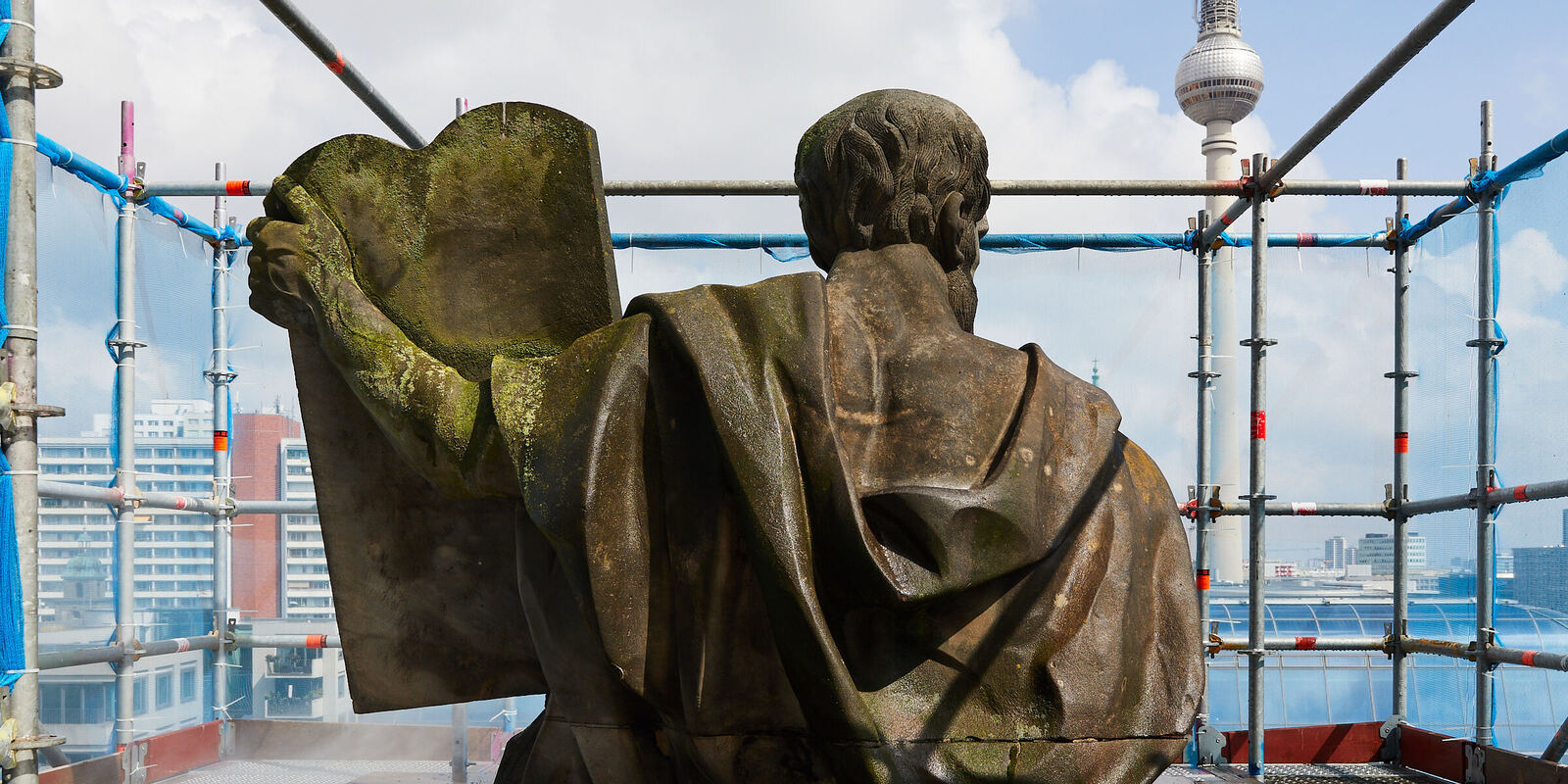
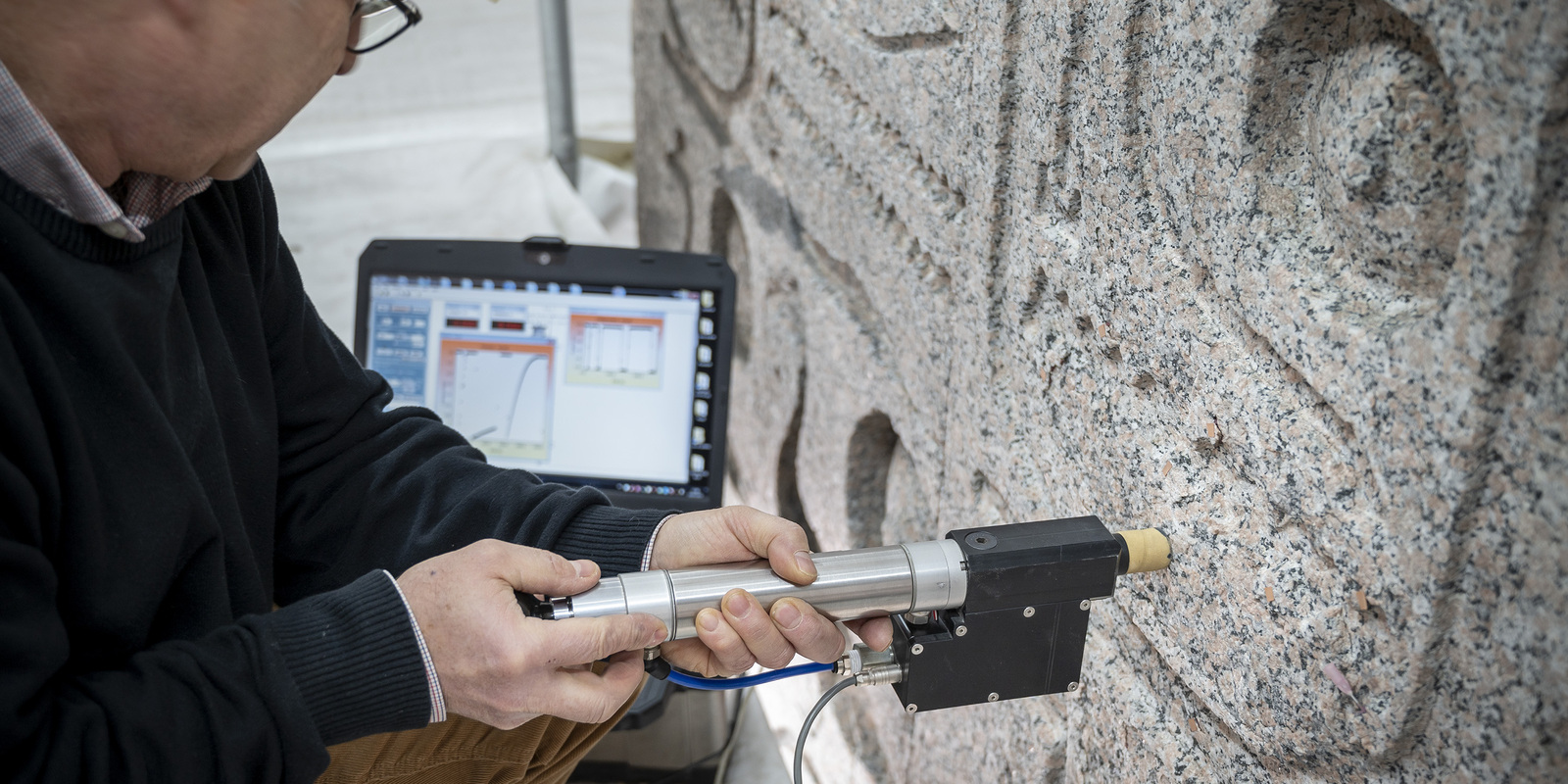
Size as a challenge and what this means for monument cleaning and restoration
When dealing with restoration cleaning for historical monuments, a key challenge is often the sheer size of the surfaces or objects. This has consequences for the entire process.
Cleaning technique selection
There are high-precision, spot cleaning techniques that achieve very good results. On large surfaces, however, these aren’t recommended for economic or technical reasons. Cleaning takes far too much time, and a uniform result on the entire facade, for example, can’t really be achieved – it may result in a checkerboard effect.



Working at heights
Cleaning tall buildings or monument components can be a challenging task. The use of scaffolding may be required for extensive work, while smaller repairs may need aerial work platforms or rope access technicians. Vertical surfaces pose a unique challenge as cleaning products may not have enough time to work, leading to runoff dirt that could cause secondary soiling of the monument. Proper disposal of dirt and cleaning agents must also be considered.

Particles and hot water/steam: the two best practices
When it comes to monument cleaning and restoration, there are numerous techniques available, but two that are frequently used on both listed and non-listed buildings are low-pressure particle blasting and high-pressure cleaning using hot water or steam.
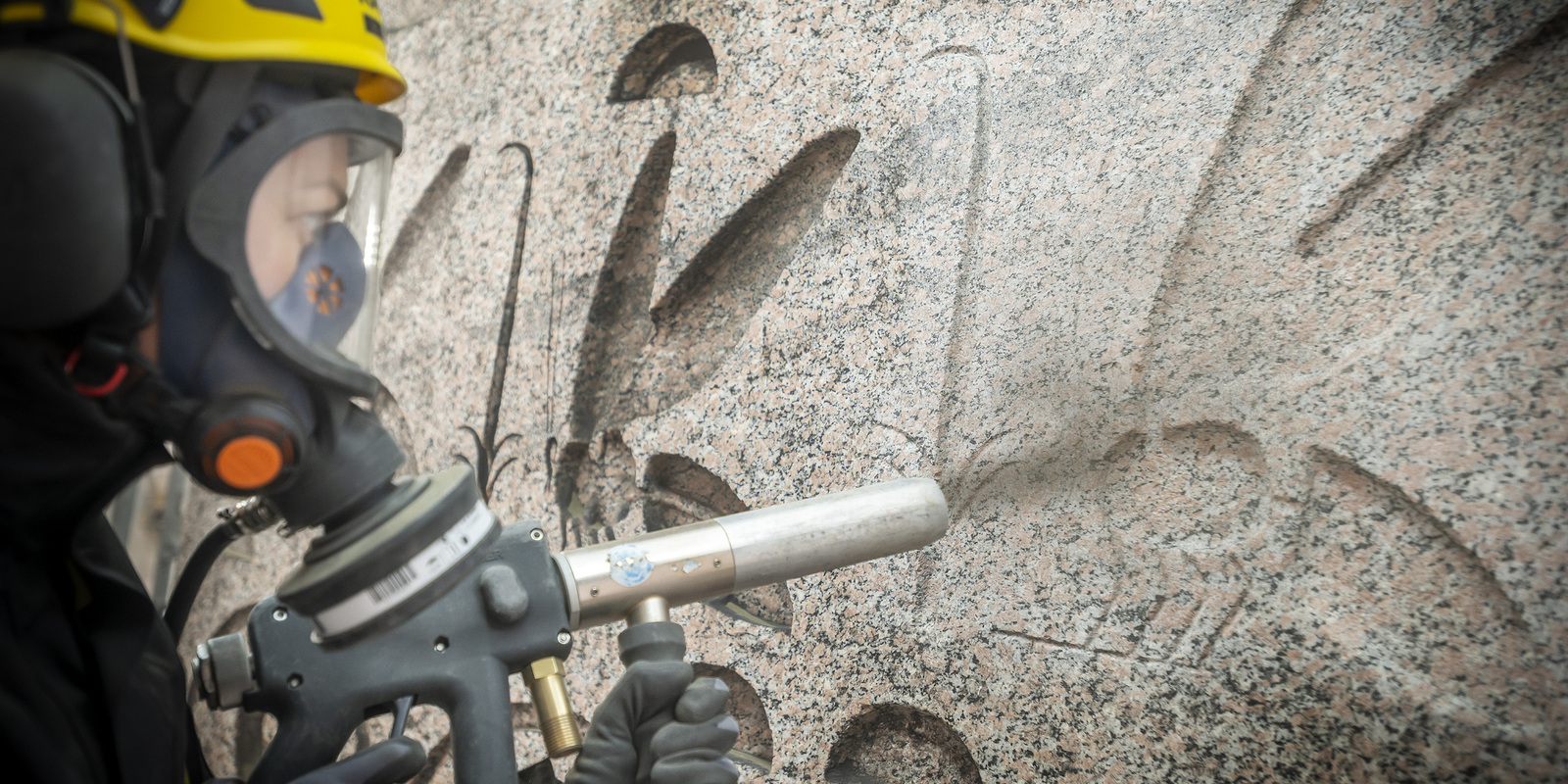
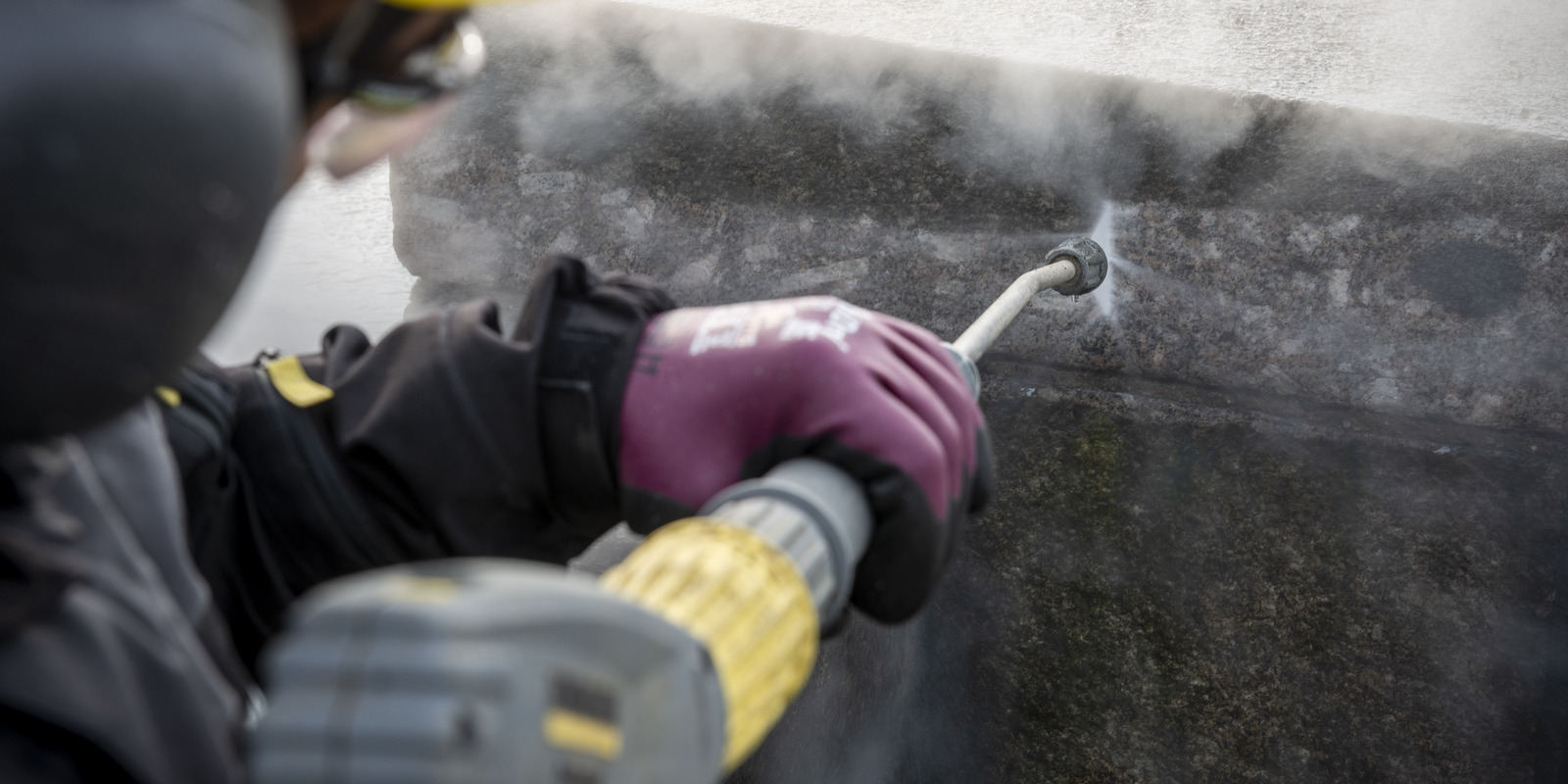
Particle jet in monument cleaning: small, gentle, and effective
The low-pressure particle blasting process is a highly effective technique for cleaning and restoring facades to their original state. This process involves using a specialised blast gun, which is supplied with compressed air from a high-quality construction compressor. To minimise the impact on the surface being cleaned, a very fine abrasive and water are added to the air in a mixing chamber, which helps to bind the dust particles.
With a vast range of over 2,000 blasting media variants available, from cornmeal to lime and glass powder to dry ice beads, one can easily tailor the mixture to meet their specific needs. The carefully prepared mixture of air, water, and abrasive exits the nozzle of the gun at an adjustable pressure, allowing the operator to regulate the quantities of air, water, and abrasive used. This precision control enables the surface to be cleaned with minimal abrasion, leaving behind a smooth and polished finish.
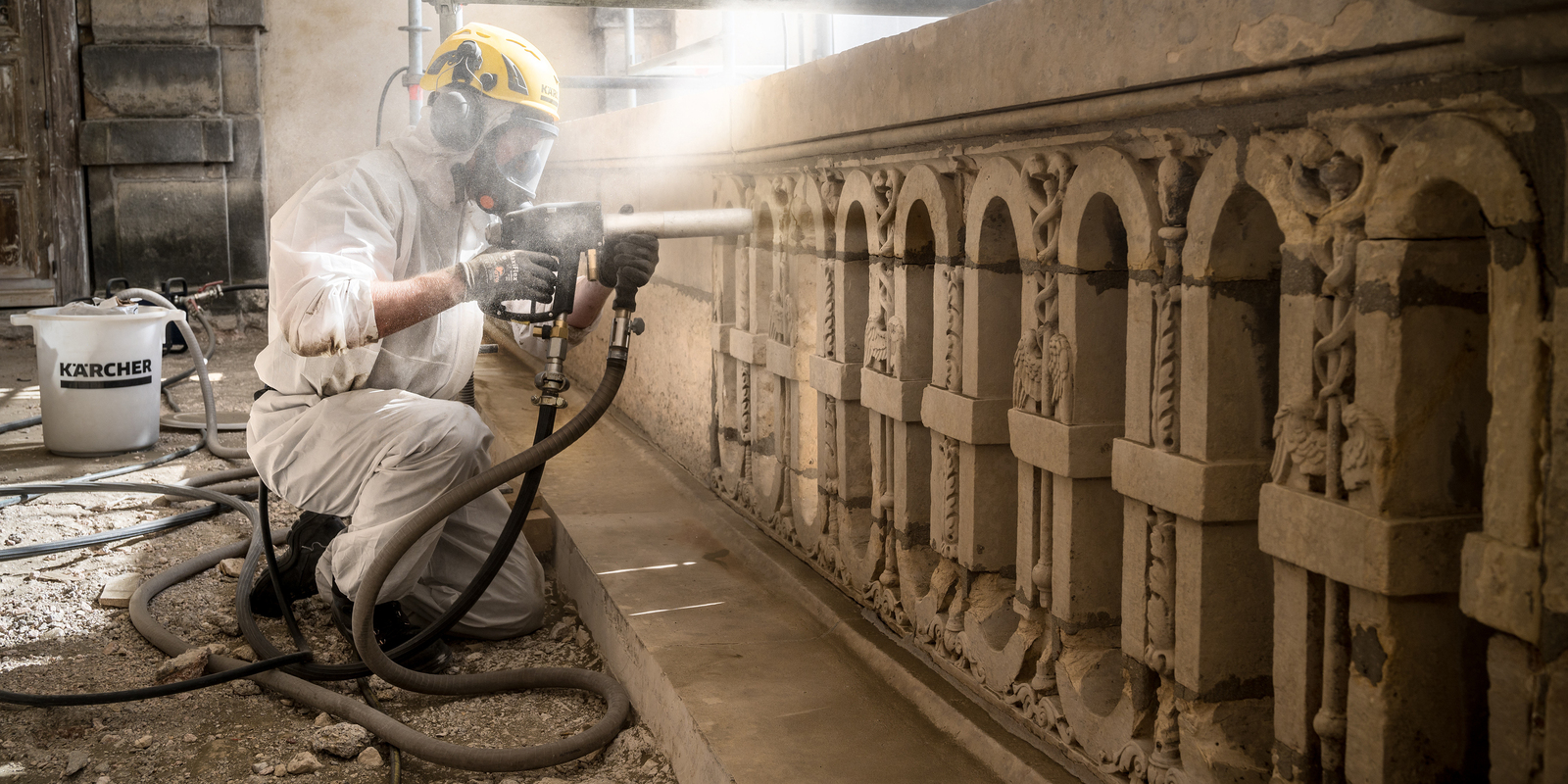
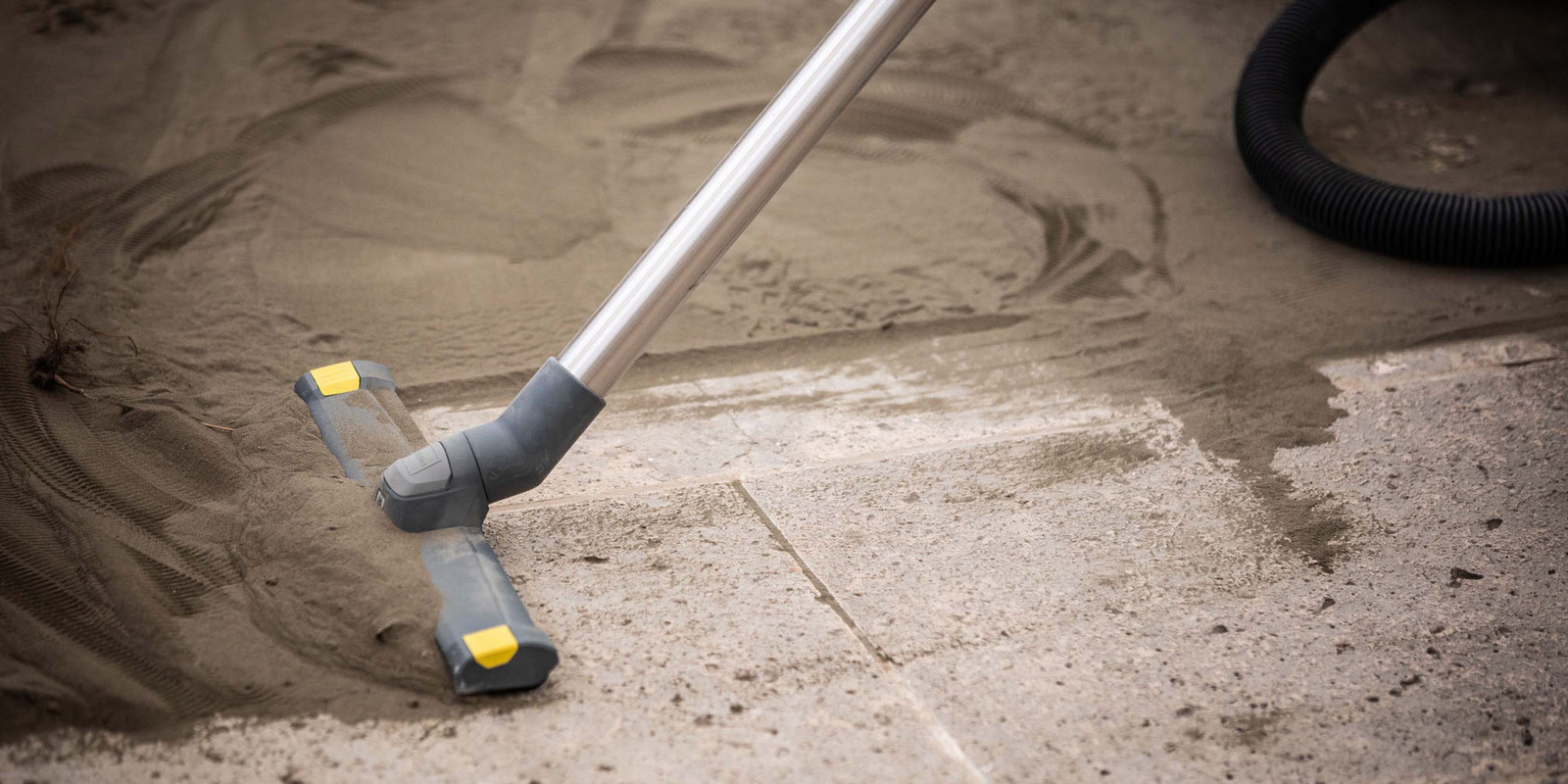
Mohs hardness
Friedrich Mohs (1773-1839), a geologist, scored different minerals against each other and ranked them according to their hardness. By assigning numerical values to widespread and easily accessible minerals, the Mohs scale was created. Minerals with a Mohs hardness 1 to 2 are considered soft, from 3 to 5 are considered medium-hard, and all minerals above Mohs scale 6 are hard.
The special case of dry ice in monument cleaning
If dry ice is used for monument cleaning, the cleaning particles literally dissolve into thin air without waste. However, it should be noted that the pressure acting on the surface during dry ice blasting is quite high, so that cracks can occur on natural stone surfaces. On the other hand, good results are almost always achieved on metal, for example, when cleaning objects made of cast iron.
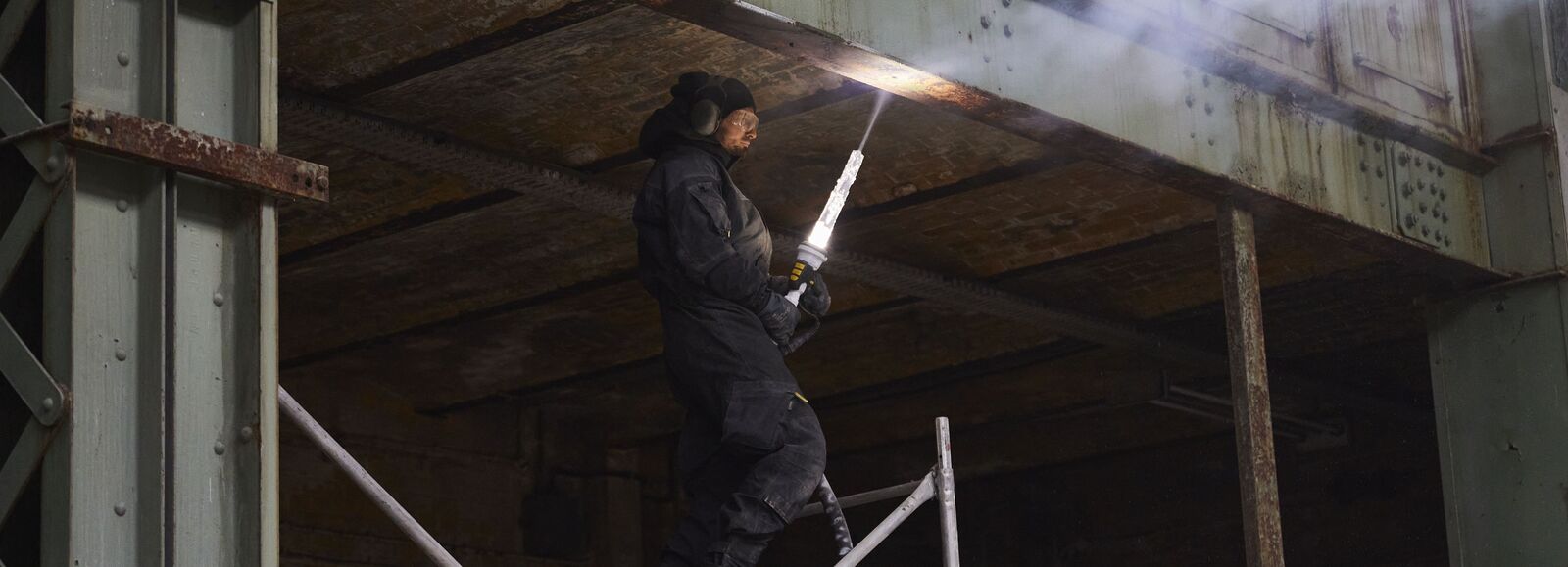
Hot water and steam for monument cleaning: pressure-free high-pressure cleaning
Although high-pressure cleaning is typically not associated with sensitive building materials, it is still possible to use this technique at very low pressures, even at settings that essentially have no pressure. For instance, when the nozzle is positioned 40 centimetres away from the surface being cleaned, not even 1 bar of pressure is exerted on the surface, even when the nozzle pressure is set to 200 bar.
Water quantity and nozzles
Cleaning performance depends on both the pressure generated by the pump, and also the volume of water coming through the pipe cross-section per unit of time. This influences the impact pressure and removes the loosened dirt. Equally important for the mechanical effect of the high-pressure jet is the high-pressure nozzle used. Flat-jet nozzles provide a higher area of work, spot-jet nozzles break up the dirt better locally, and rotor nozzles combine the two advantages – but they are only recommended for tough surfaces.
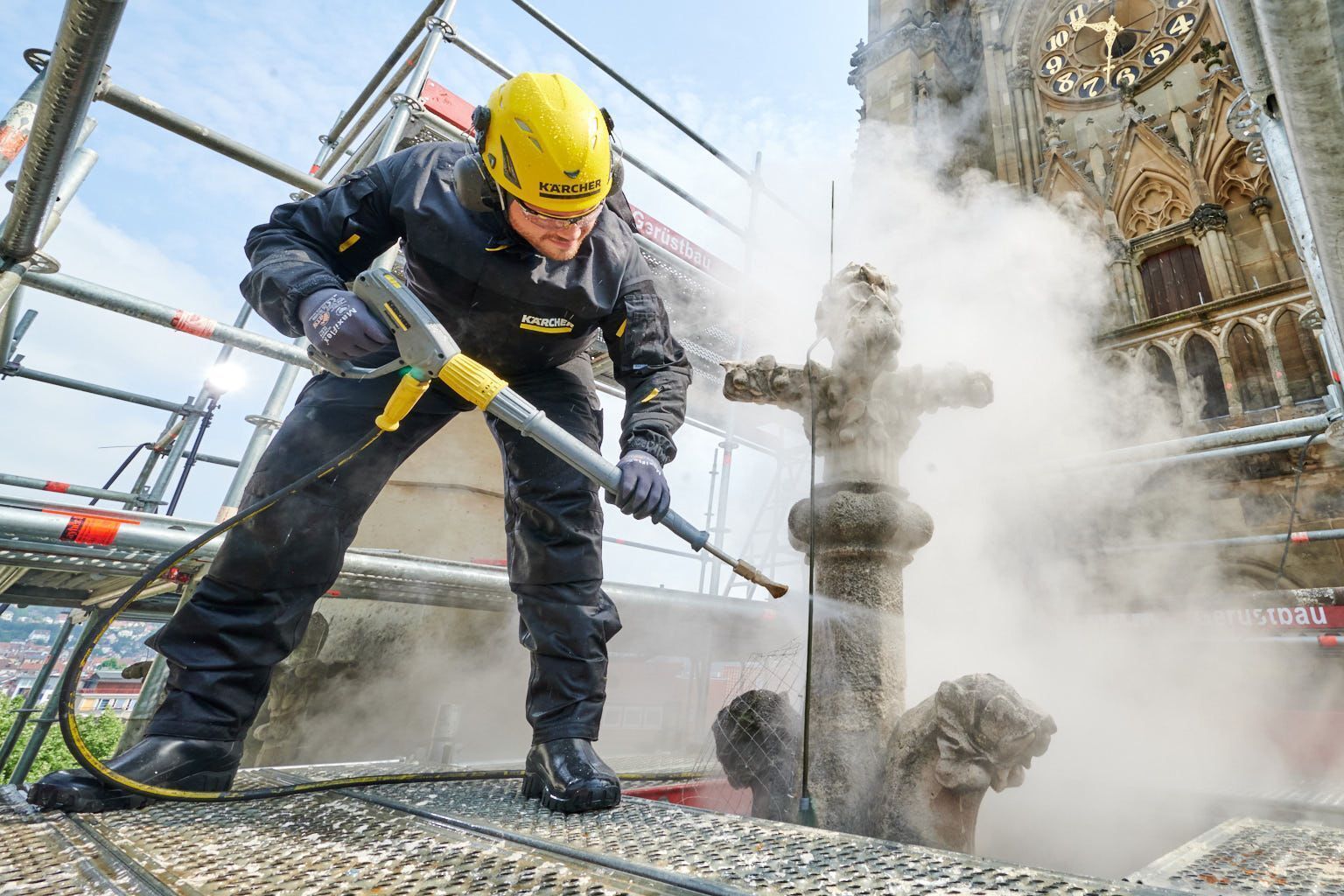
Advantages of hot water in monument cleaning
Cold and hot water high-pressure cleaners are used for monument cleaning and restoration. Depending on the type of substrate and dirt, it’s possible to work at a temperature of 80 °C or higher, which reduces the cleaning time by up to 60 percent. Hot water jets have good flushing effect and low vapour formation.
Advantages of the steam settings
The steam stage is particularly suitable for sensitive, fissured surfaces and for removing residues with a higher melting point. It works with a surface pressure of 0.5 to 1 bar and a surface temperature of up to 100°C. Algae, moss and lichen can be removed gently. In the steam stage, the pump pressure is reduced, and the volume of water is halved, resulting in a very high-water temperature of up to 155°C. This also largely kills deep-seated spores and delays new growth, which usually makes the use of biocides unnecessary.
Special case: ultrahigh-pressure technology on metal facades
High-pressure technology can also be used to remove millimetre-thick layers of limescale from metal monuments if the process proves successful on test surfaces. Various combinations of pressures between 400 and 500 bar are possible, as well as flat jet and rotary nozzles, for example, to remove sinter without damage.
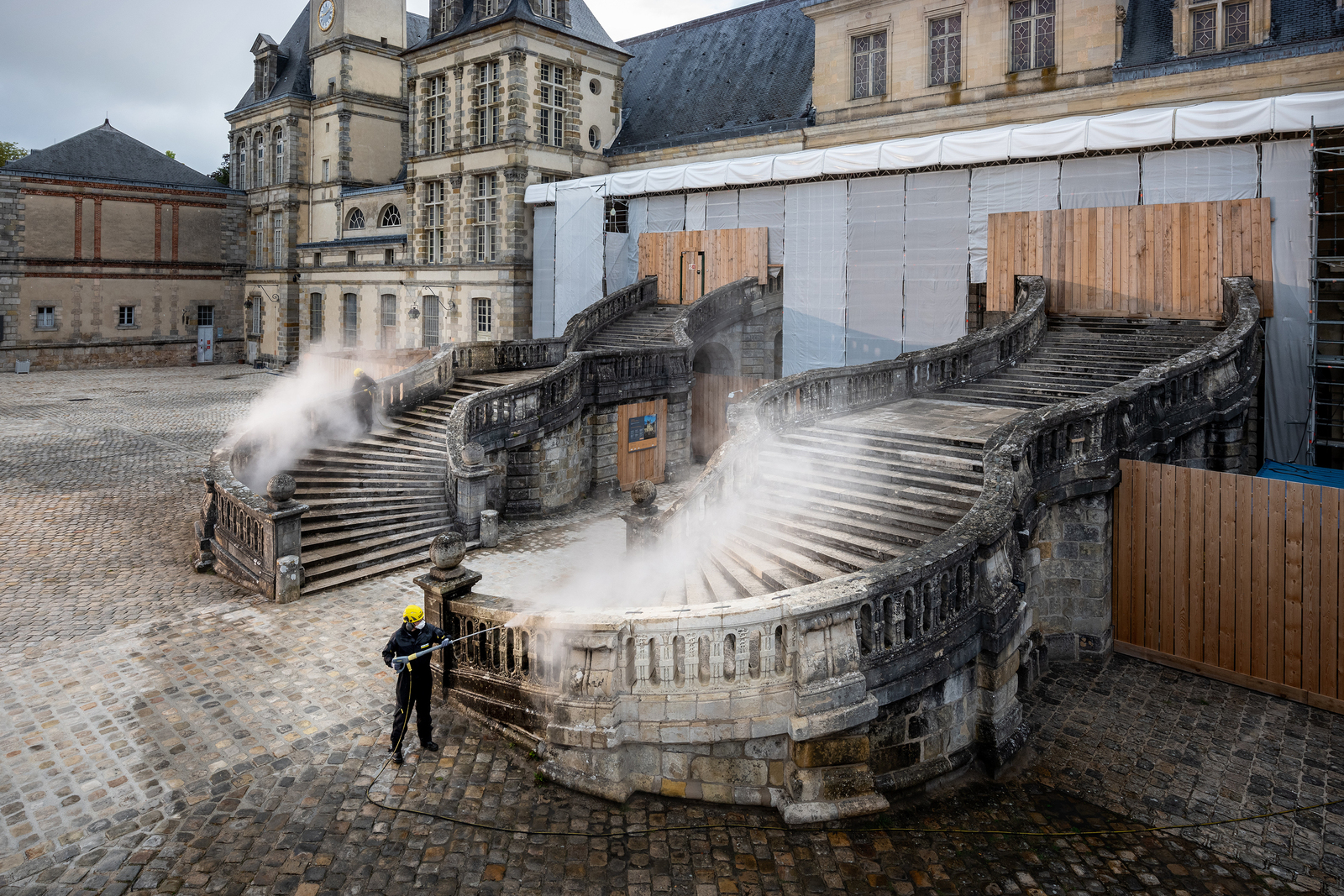
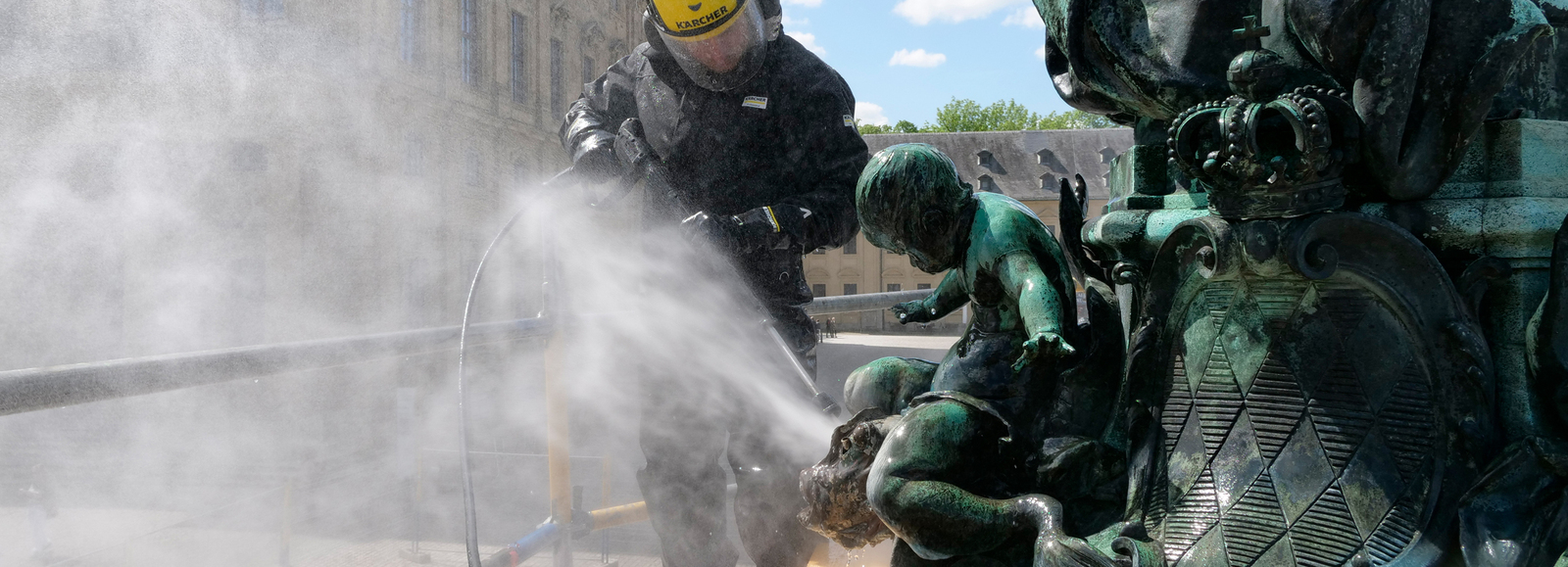
Compresses and lasers: other techniques for restoration cleaning
In addition to particle jets, hot water high-pressures and steam there are other techniques for monument cleaning and restoration that are suitable for specialised cleaning tasks. These include compresses and laser technology.
When compresses make sense
When cleaning surfaces with compresses, an absorbent medium is used, which is soaked with water, alcohol and various other substances. This method is used before working with high-pressure steam cleaning or low-pressure particle blasting methods to remove harmful salts from heavily contaminated surfaces via desalination compresses. Salts are otherwise dissolved by the cleaning in the water and get even deeper into the monument surfaces.
To remove salts from building material, a moist compress is applied to the monument's surface. This compress pushes the moisture's evaporation zone further into the material, causing any dissolved salts to be transported to the surface and into the compress. Once the moisture evaporates, the dissolved salts are left behind in the compress as crystals. Analysing the contents of the compress in a laboratory allows experts to determine if enough salt has been removed, or if additional cleaning is necessary.
When laser technology makes sense
Laser cleaning methods were not commonly used before due to the risk of yellowing the surface of stone materials. However, recent developments in the technology have enabled more specific application. With knowledge of the appropriate duration and irradiation conditions, laser pulses in the nano/microsecond range can be used safely and gently to remove stone debris, metal oxidation, and paint dirt without causing damage to the underlying surface.
For effective cleaning, there must be a clear colour contrast between the surface and dirt. This is because the darker dirt is absorbed by the laser light and ablated in thin layers, while the lighter surface reflects the light. By testing the effects on sample surfaces and selecting the right parameters, laser cleaning can be a highly effective method for certain cleaning tasks.
EXCURSUS – Kärcher cultural sponsoring: restoration cleaning in practice
As part of its cultural sponsorship, Kärcher has carried out restoration cleaning on more than 150 monuments in recent decades – from the Colonnades in St. Peter's Square in Rome to the Memnon Colossi in Luxor in Upper Egypt and various listed buildings near Athens and Piraeus, the Obelisk in Paris or Cologne Cathedral.






